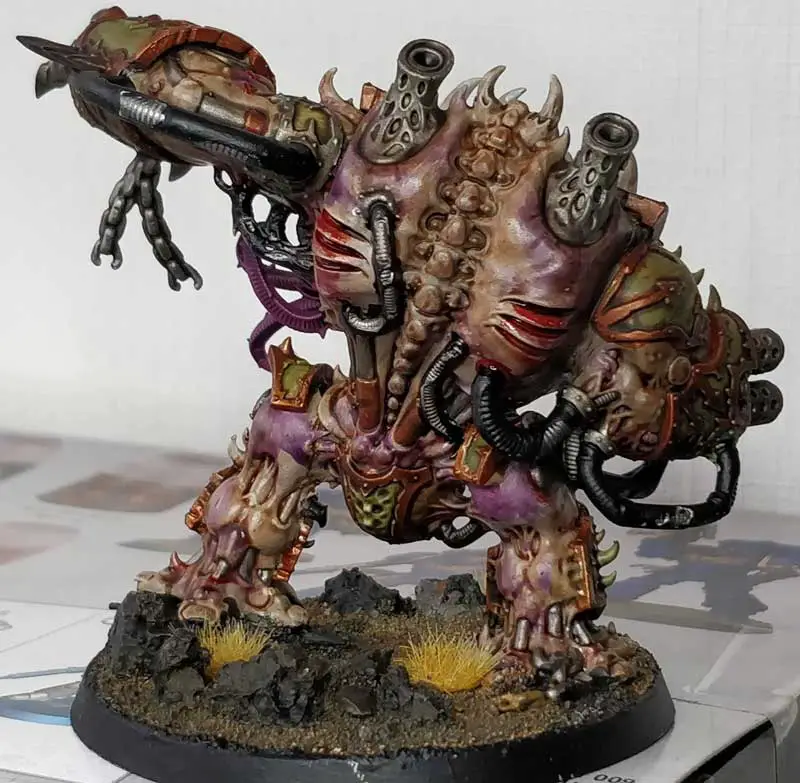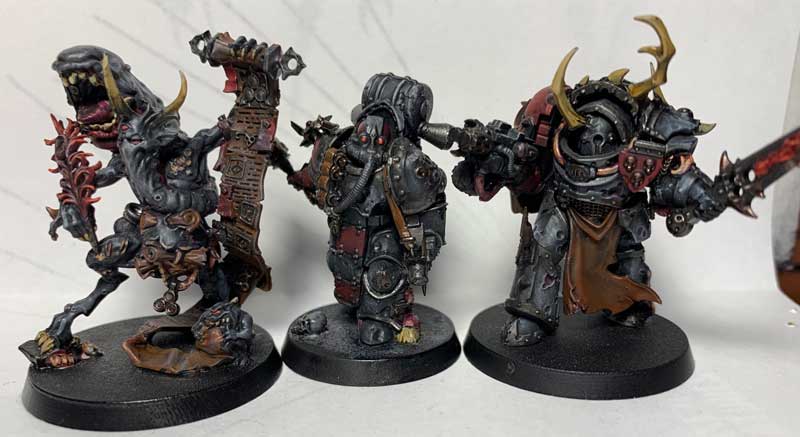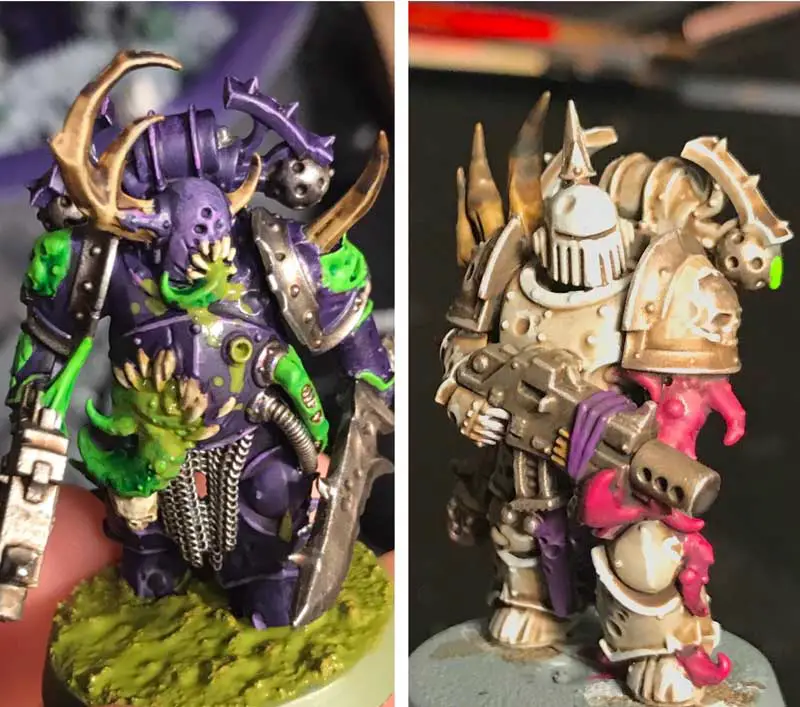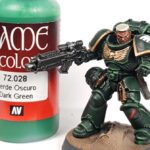Warhammer 40K Death Guard Color Schemes

Do you want to paint your Plague Marines, Typhus, or Herald of Nurgle figures?
The Death Guard is a popular faction in the Warhammer 40K universe, known for their resilient and unstoppable nature. They are a faction of traitor Space Marines but have a different color scheme from the Space marines.
Whether you want to create a heavily weathered and battle-worn look on your 40K Death Guards, in this guide, we explore some of the popular Death Guard color schemes to help you paint your model.
The Lore of Warhammer 40K Death Guards
The Death Guards are a faction of traitor Space Marines that succumbed to the corruption of Nurgle, the Chaos god of decay and pestilence.
They were originally known as the XIV Legion of Space Marines, created by the Emperor to serve as the defenders of humanity. However, during the Horus Heresy, they were led by their primarch, Mortarion, to betray the Emperor and join the forces of Chaos. They became one of the most formidable factions in the Heresy, known for their resilience and use of biological and chemical warfare.
Since they partake in chemical warfare, Death Guards often appear sickly, from their decaying skin to greenish putrid flesh that gives them a Nurgle-like appearance.
What is the Official Color Scheme of the 40K Death Guards?
The Death Guard color scheme is closely tied to Nurgle’s themes of decay and corruption.
The official color of their armor is green, which is often described as a “sickly” or “foul” hue, with a mottled and uneven appearance that gives it a unique texture.
The color scheme also includes other elements associated with Nurgle, such as boils, pustules, and other signs of disease. These are often painted onto the armor using shades of purple and yellow. Besides this, mini painters use yellow and bronze as accent colors on armor to create weathered and corroded textures to display decay and rot.


Other Possible Paint Schemes for Death Guard Army
If you want to paint your death guard minis as a first 40k army but are not sure of replicating the “classic” green-brown-slimy Death Guards look, then choose a color you like and do you differently.
Most mini painters like the look of the green and slime but feel that it’s too much of a “classic” look, while some others feel that too many mini painters have done the “same” scheme. So, they want to do something a tad different.
For these reasons, you may find a death Guard model painted with turquoise, gold, and pink highlights. Most painters even paint their Death Guard Grey with brass trim.


Besides this, you can paint your Death Guards with creamy white armor, deep red flesh and tentacles, and shiny black horns. For metal parts, use rusty gunmetal, bluish brass, or just straight-up matte black.
Also, consider painting your Death guards with Xereus or dark purple armor, screaming bell metallics, and moot green slimy details. A purple color scheme makes your Death Guards look like specialized urban fighters.


How to Paint Death Guard Miniatures
Every painter has their own unique painting techniques that help them create that desired scheme of their death guards. However, a general way to paint your death Guard is:
- Base Coat: Start with a base coat of Caliban Green, a dark green color that will serve as the foundation for the rest of the paint.
- Highlights: Use Warpstone Glow to highlight the edges of the armor, which helps you add depth and contrast, or do a mix of Death Guard Green and Elysian Green. You can also use a lighter green color like Moot Green to add more highlights.
- Weathering: Add weathering and battle damage using Agrax Earthshade and Nihilakh Oxide.
- Pustules: Want to create small nurgle-like boils on the Death Guards? Use a mix of purple and yellow to paint pustules and other signs of disease onto the model. Then, use Citadel’s technical paint Nurgle’s Rot, to add a more realistic texture to the pustules.
Tips and Tricks for Painting 40K Death Guards
If you’ve never painted a death guard mini before, some helpful tricks I often recommend are to make a painting plan, stick to the painting plan, grind out 95% of the minis according to the plan, and take your time and enjoy painting the other 5%.
However, some other things to keep in mind include:
- If, after painting the minis, you don’t like the results in terms of the chosen color, don’t be afraid to change the color scheme on your next model.
- Don’t be afraid to go away from the standard green scheme. Chances are that your local hobby store may not have the official green color in stock, so try a different green color and see how it turns out.
- Always use a wash in all the nooks and details after base coating the model. Why? Many little details become hard to distinguish without a wash.
- Don’t do an all-over wash. Instead, try recess shading, it may take longer, but the results are way better and it makes painting the little details much easier while making the segmented armor pop.
- Death Guard is extremely forgiving of mistakes. Significantly more than other factions. So, if you make a mistake, do special effects like weathering, rust, or nurgly grime to make it look passable.
Conclusion
The Death Guard color scheme is one of the most iconic and visually striking in the Warhammer 40K universe. But, the most important factor to consider when painting them is that their color scheme is closely tied to the themes and symbolism of Nurgle. When choosing a paint scheme for your Typhus or Plague Marines, just make sure to choose colors that fit into this theme.




